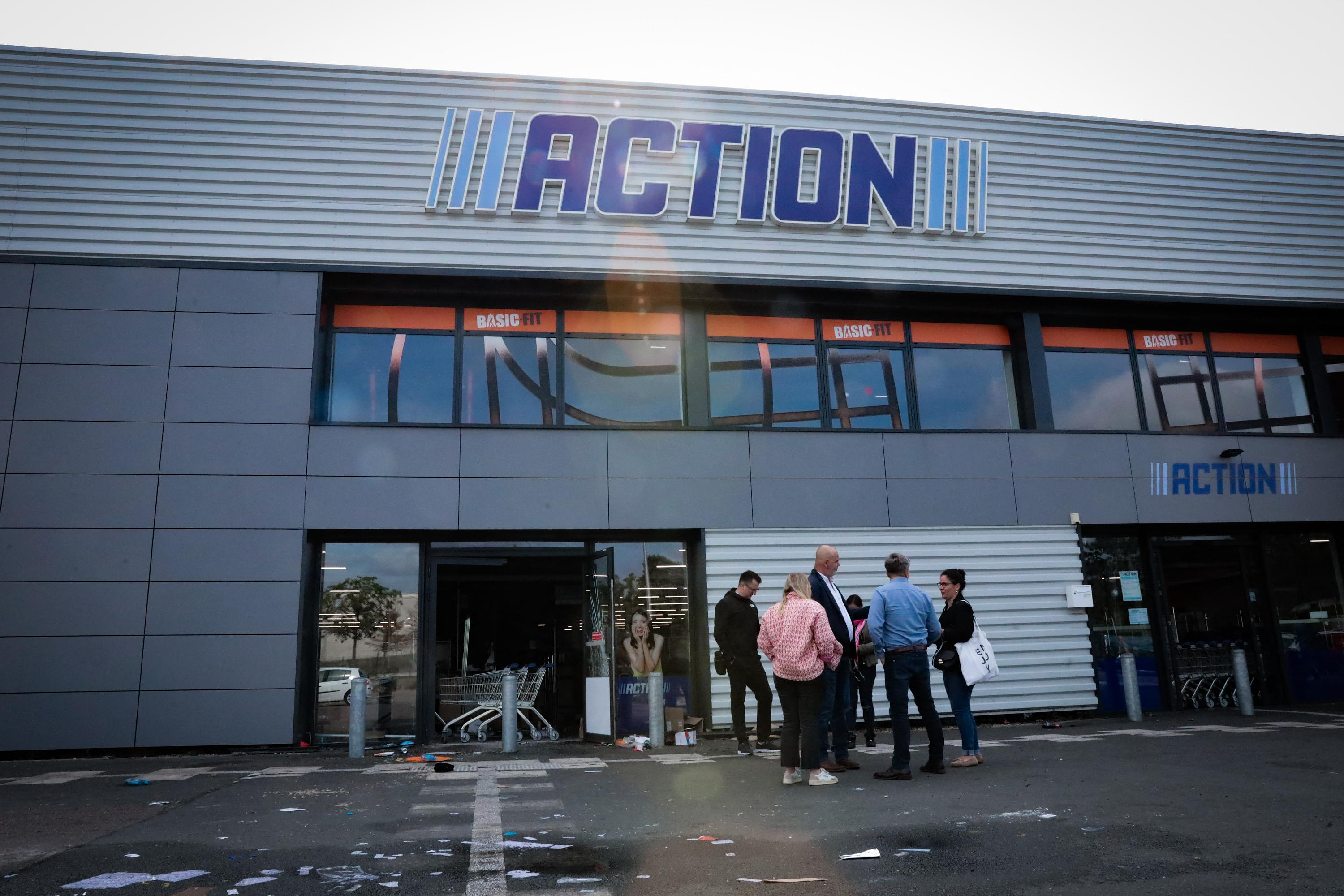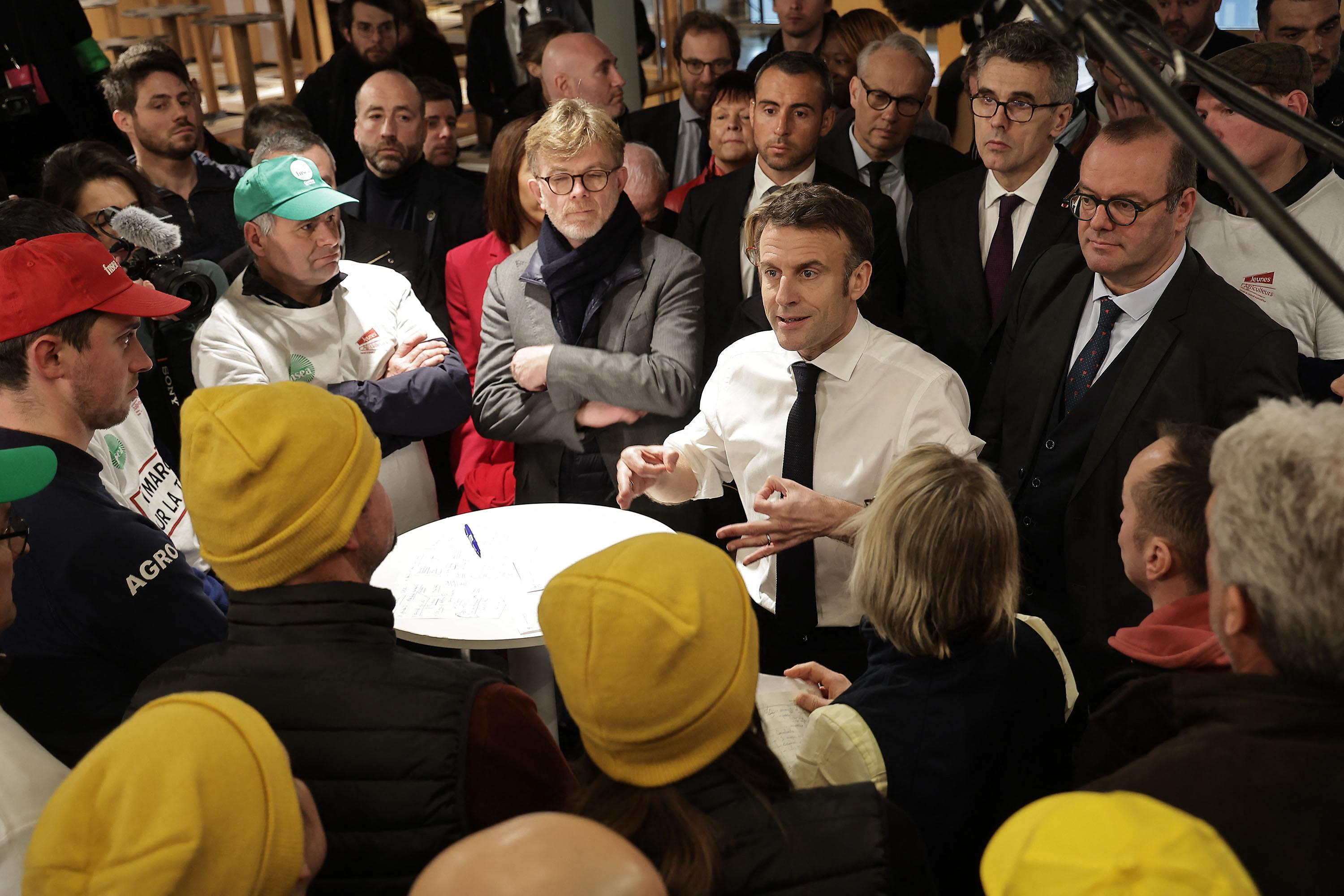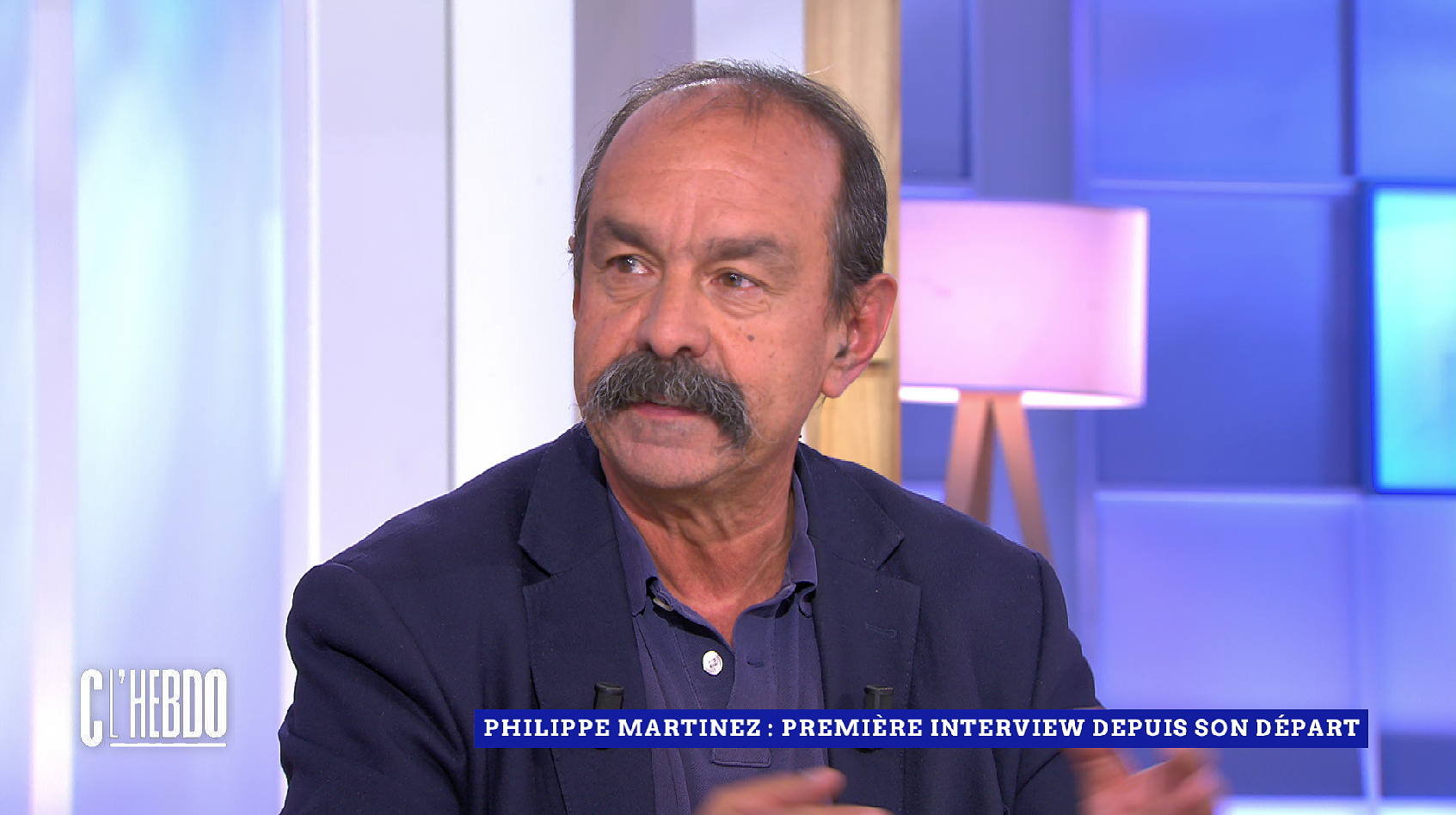British Admiral Andrew Cunningham was a cool dog. Before using this talent to become First Sea Lord in the Royal Navy in 1943, he gave a rehearsal on March 27, 1941 in Alexandria. Visibly relaxed, he left his flagship, the battleship HMS "Warspite", with his golf equipment to take a round on the green. It was intentional that the audience watched his performance. Above all, the Japanese Consul General was to be convinced that the usual garrison duty was announced on the British Mediterranean fleet.
However, the opposite was the case. Two days earlier, Cunningham had received an alarming report from Ultra, the UK news outlet based in Bletchley Park, north-west of London. There one was now able to read parts of the German radio traffic, which was encrypted with the Enigma cipher machine. The message said that an Italian naval operation in the eastern Mediterranean was scheduled for March 28. To prevent Japanese officials in Alexandria from warning their allies in the tripartite pact, Cunningham ostentatiously flaunted his love of golf.
The following night he put to sea with the "Warspite", two other battleships, the aircraft carrier HMS "Formidable" and nine destroyers and set course for Greece, where British troops were preparing for a possible invasion by the Wehrmacht. Previously, Cunningham, as Commander-in-Chief of the British Mediterranean Fleet, had stopped convoy traffic and ordered a formation of four light cruisers and four destroyers under the command of Henry Pridham-Wippell into the sea area north of Crete.
The Italian advance was preceded by fierce debates between Italians and Germans. After British carrier aircraft had succeeded in sinking a battleship and damaging two others in a night attack on the port of Taranto in November 1940, Supermarina, Mussolini's naval command, advocated a defensive strategy. The main focus of the fleet was to protect the supply lines to North Africa, where the collapse of the Italian positions had only been prevented by the use of the German Afrika Korps. Hitler's Grand Admiral Erich Raeder, on the other hand, demanded that the Royal Navy "must be expelled from the entire Mediterranean region and, if possible, smashed".
When the British began moving troops to Greece in early March - the German attack was planned for April - the Kriegsmarine urged their Italian partners to push against enemy supply lines. The X. Fliegerkorps of the German Air Force, which was stationed in Sicily, would provide the necessary security for this. This and the news that German bombers had knocked out two British battleships (which they did not) persuaded the Commander-in-Chief of the Italian Fleet, Admiral Angelo Iachino, to push forward to the Benghazi-Crete line.
To this end, on March 26, in addition to the modern battleship "Vittorio Veneto", he pulled together six heavy cruisers, two light cruisers and 13 destroyers, which ran east in two groups. But the problems soon increased. The formation of five cruisers was spotted by a British flying boat. In addition, German scouts reported the approach of three British battleships and an aircraft carrier in the eastern Mediterranean. This removed any element of surprise from the operation. However, Supermarina did not pass this message on to Fleet Commander Iachino.
On the other hand, on the morning of March 28, he sighted the cruiser formation under Pridham-Wippell south of Cape Matapan on the southern tip of the Peloponnese, which appeared to be easy prey. Iachino launched a pursuit, but the British were able to escape and catch up with Cunningham's main group. In the meantime, the British admiral had sent a number of torpedo bombers from the "Formidable" - outdated Fairey Swordfish biplanes that could only reach 220 kilometers per hour - against the "Vittorio Veneto", but they were unable to achieve any hits. Warned by this, Iachino ordered the march back. Cunningham's slow-moving battleships, all WW1 veterans, lagged behind.
In a second air raid in the afternoon, the Italian battleship received a hit that led to water ingress, which resulted in a significant reduction in speed for several hours. Nevertheless, the British failed to track down the enemy.
However, a third attack by torpedo bombers in the evening found a new target. The heavy cruiser "Pola" lay motionless. To protect him, Iachino ordered two heavy cruisers and some destroyers to retreat. The ships arrived just as the Pola was targeted by Cunningham's battleships.
The British were equipped with fire control radar and immediately fired on the Italians. Your opponents, completely unprepared, untrained in night combat and without radar, were shot down within minutes. Only two destroyers managed to escape. 2400 Italians drowned, several hundred were rescued by the English ships. The British lost only one crewed bomber.
Iachino was able to safely bring back the "Vittorio Veneto" and the other cruisers. But after the catastrophe of Taranto and the intervening bombardment of Genoa by British ships, this third defeat by the Royal Navy did little to boost the morale of the Italian Navy. They blamed the Germans for not providing adequate fighter protection and for having falsely reported that two battleships had been successfully bombed, which almost spelled failure.
The German Naval War Command, on the other hand, denied all responsibility: "The fact that this first offensive operation led to such a failure is solely due to the complete failure of the Italian Navy in terms of tactical implementation, mastery of formation and ship command and training in the use of weapons." Suspicion and Arrogance increasingly characterized the relationship between the allied dictatorships.
The Royal Navy, on the other hand, had proved with the first use of carrier aircraft in a combat movement that the bomber was well on the way to replacing the battleship as the most important weapon at sea. The battle off Cape Matapan marked the rise of the aircraft carrier.
You can also find "World History" on Facebook. We are happy about a like.

 B:SM will break its investment record this year with 62 million euros
B:SM will break its investment record this year with 62 million euros War in Ukraine: when kyiv attacks Russia with inflatable balloons loaded with explosives
War in Ukraine: when kyiv attacks Russia with inflatable balloons loaded with explosives United States: divided on the question of presidential immunity, the Supreme Court offers respite to Trump
United States: divided on the question of presidential immunity, the Supreme Court offers respite to Trump Maurizio Molinari: “the Scurati affair, a European injury”
Maurizio Molinari: “the Scurati affair, a European injury” Irritable bowel syndrome: the effectiveness of low-carbohydrate diets is confirmed
Irritable bowel syndrome: the effectiveness of low-carbohydrate diets is confirmed Beware of the three main sources of poisoning in children
Beware of the three main sources of poisoning in children First three cases of “native” cholera confirmed in Mayotte
First three cases of “native” cholera confirmed in Mayotte Meningitis: compulsory vaccination for babies will be extended in 2025
Meningitis: compulsory vaccination for babies will be extended in 2025 When traveling abroad, money is a source of stress for seven out of ten French people
When traveling abroad, money is a source of stress for seven out of ten French people Elon Musk arrives in China to negotiate data transfer and deployment of Tesla autopilot
Elon Musk arrives in China to negotiate data transfer and deployment of Tesla autopilot Patrick Pouyanné, CEO of TotalEnergies, is very reserved about the rapid growth of green hydrogen
Patrick Pouyanné, CEO of TotalEnergies, is very reserved about the rapid growth of green hydrogen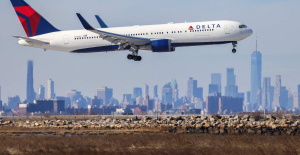 In the United States, a Boeing 767 loses its emergency slide shortly after takeoff
In the United States, a Boeing 767 loses its emergency slide shortly after takeoff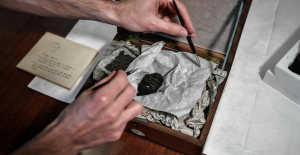 A charred papyrus from Herculaneum reveals its secrets about Plato
A charred papyrus from Herculaneum reveals its secrets about Plato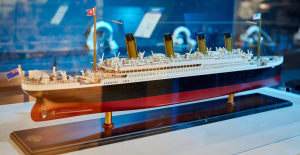 The watch of the richest passenger on the Titanic sold for 1.175 million pounds at auction
The watch of the richest passenger on the Titanic sold for 1.175 million pounds at auction Youn Sun Nah: jazz with nuance and delicacy
Youn Sun Nah: jazz with nuance and delicacy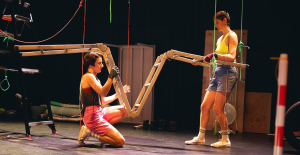 Paris Globe, a new international theater festival
Paris Globe, a new international theater festival Skoda Kodiaq 2024: a 'beast' plug-in hybrid SUV
Skoda Kodiaq 2024: a 'beast' plug-in hybrid SUV Tesla launches a new Model Y with 600 km of autonomy at a "more accessible price"
Tesla launches a new Model Y with 600 km of autonomy at a "more accessible price" The 10 best-selling cars in March 2024 in Spain: sales fall due to Easter
The 10 best-selling cars in March 2024 in Spain: sales fall due to Easter A private jet company buys more than 100 flying cars
A private jet company buys more than 100 flying cars This is how housing prices have changed in Spain in the last decade
This is how housing prices have changed in Spain in the last decade The home mortgage firm drops 10% in January and interest soars to 3.46%
The home mortgage firm drops 10% in January and interest soars to 3.46% The jewel of the Rocío de Nagüeles urbanization: a dream villa in Marbella
The jewel of the Rocío de Nagüeles urbanization: a dream villa in Marbella Rental prices grow by 7.3% in February: where does it go up and where does it go down?
Rental prices grow by 7.3% in February: where does it go up and where does it go down? Even on a mission for NATO, the Charles-de-Gaulle remains under French control, Lecornu responds to Mélenchon
Even on a mission for NATO, the Charles-de-Gaulle remains under French control, Lecornu responds to Mélenchon “Deadly Europe”, “economic decline”, immigration… What to remember from Emmanuel Macron’s speech at the Sorbonne
“Deadly Europe”, “economic decline”, immigration… What to remember from Emmanuel Macron’s speech at the Sorbonne Sale of Biogaran: The Republicans write to Emmanuel Macron
Sale of Biogaran: The Republicans write to Emmanuel Macron Europeans: “All those who claim that we don’t need Europe are liars”, criticizes Bayrou
Europeans: “All those who claim that we don’t need Europe are liars”, criticizes Bayrou These French cities that will boycott the World Cup in Qatar
These French cities that will boycott the World Cup in Qatar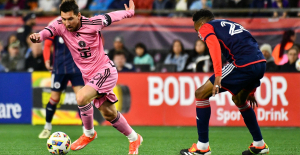 MLS: new double for Messi who offers victory to Miami
MLS: new double for Messi who offers victory to Miami PSG-Le Havre: Ramos on his way, Kolo Muani at the bottom of the hole… Favorites and scratches
PSG-Le Havre: Ramos on his way, Kolo Muani at the bottom of the hole… Favorites and scratches Football: Vasco da Gama separates from its Argentinian coach Ramon Diaz
Football: Vasco da Gama separates from its Argentinian coach Ramon Diaz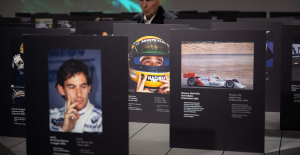 F1: for the French, Ayrton Senna is the 2nd best driver in history ahead of Prost
F1: for the French, Ayrton Senna is the 2nd best driver in history ahead of Prost





